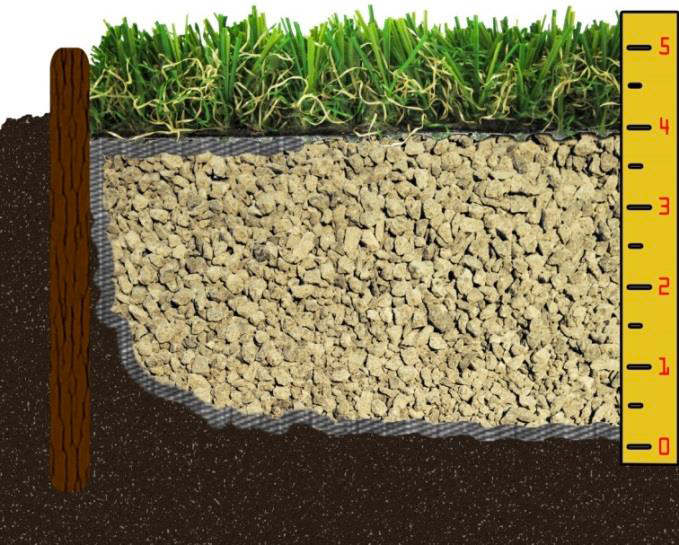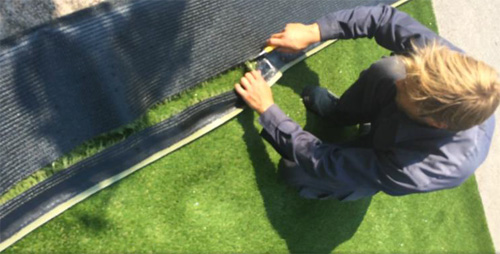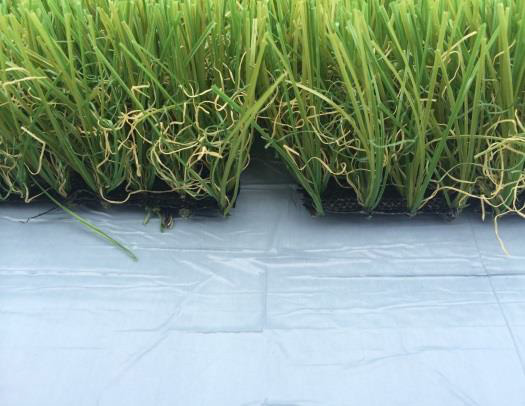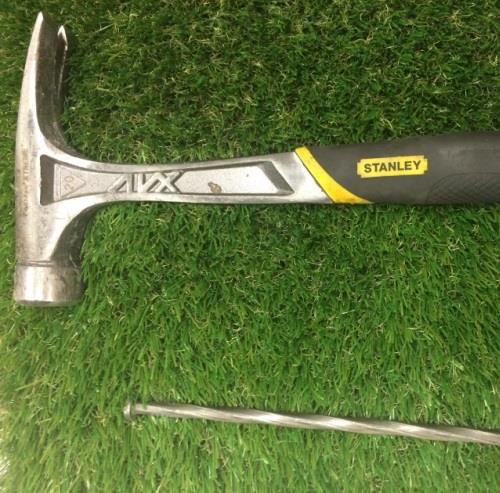Artificial Lawn Installation
A quick list of all you will need to know for your artificial lawn installation.
Site Preparation
how to install artificial grass ?
1) Mark the area where you want to install the artificial grass
2) Dig 2 to 4 inches deep for a residential application and 4 to 8 inches for a commercial application, take care to clean the perimeter to facilitate the laying of the border.
3) Remove a geotextile tube at the bottom of the excavated surface.
Geotextile sheaths parts must overlap at least 1 "to ensure that the land does not mix with the stone embankment over the years.
4) Not required. Install the EZ-Edge to places that are not pre-defined by the pavement, a soiling, pool, sidewalk, etc.

5) Backfill your excavated surface with clean stone of 1/4” to 1/2 ” diameter up to the
perimeter. You can also use stone dust.
* Trick: Level out with a rake in beginning your backfill with the part located at
the opposite of your access to the field.
6) Even out and compact the surface with a hand compactor or a roller compactor.
Residential site preparation

1. Excavation of 4 inches
2. Installation of the geotextile
3. Backfill with clean stone 1/4 or 1/8
4. Smooth the surface using a vibrating plate
5. Installation and cutting (if necessary) of synthetic grass
6. Jointing surfaces (if necessary) with the self-adhesive membrane
7. Fixation of the perimeter with spiral nails 8 ”
Commercial site preparation

1. Excavation of 8 inches
2. Backfill 6 inches with 0-3 / 4
3. Installation of a drain (required)
4. Installation of the geotextile sheath
5. Backfill with stone dust
6. Cut (if necessary) the synthetic grass
7. Jointing the surfaces (if necessary) with the self-adhesive membrane
8. Fixation of the perimeter with spiral nails 8 ”
Installation of the artificial grass
1) Measure and cut your first piece of grass that you want to install, make sure both sides have a surplus of 2 inches.
2) Remove and place the latter. Plant a nail in each corner to 1.5 foot away from the nearest edge to secure the turf surface in having the possibility of folding the edge of the area.
3) Measure and cut the grass in making sure to have a surplus of 2 inches on each side. It must overlap of 2 inches with the last piece of turf installed.
4) Remove and place the latter. Make sure you have your 2 ” overlap with the last installed piece and then stabilize with nails in each corner located 1.5 foot contour as in step 2.
5) Cut out with an exacto the excess turf that overlaps the last piece by cutting from below the surface not to cut the grass fibers located near the edge.

Proceed by section of 1 inch and check the accuracy of your cut every time. Parts should not touch after cutting. You can have up to 0.25” distance between the two surfaces so that the seal is harmonious.

6) Remove and place your joint tape below the surface and against the joint. Remove the backing protecting the adhesive and remove the two pieces of turf forming the seal on the ribbon. Make good adhesion of turf joint tape firmly trampling against the joint turf.
7) Close both surfaces gently to keep the fiber right.
8) Put some weight on the joint to provide adhesion of the membrane and the artificial grass
9) Cut the excess grass to finish the perimeter.
10) Now you are ready to nail the outline of your area with 8 inches spiral nails.

 CANADA – ENGLISH (CAD$)
CANADA – ENGLISH (CAD$) United States – ENGLISH (USD$)
United States – ENGLISH (USD$) Company
Company

